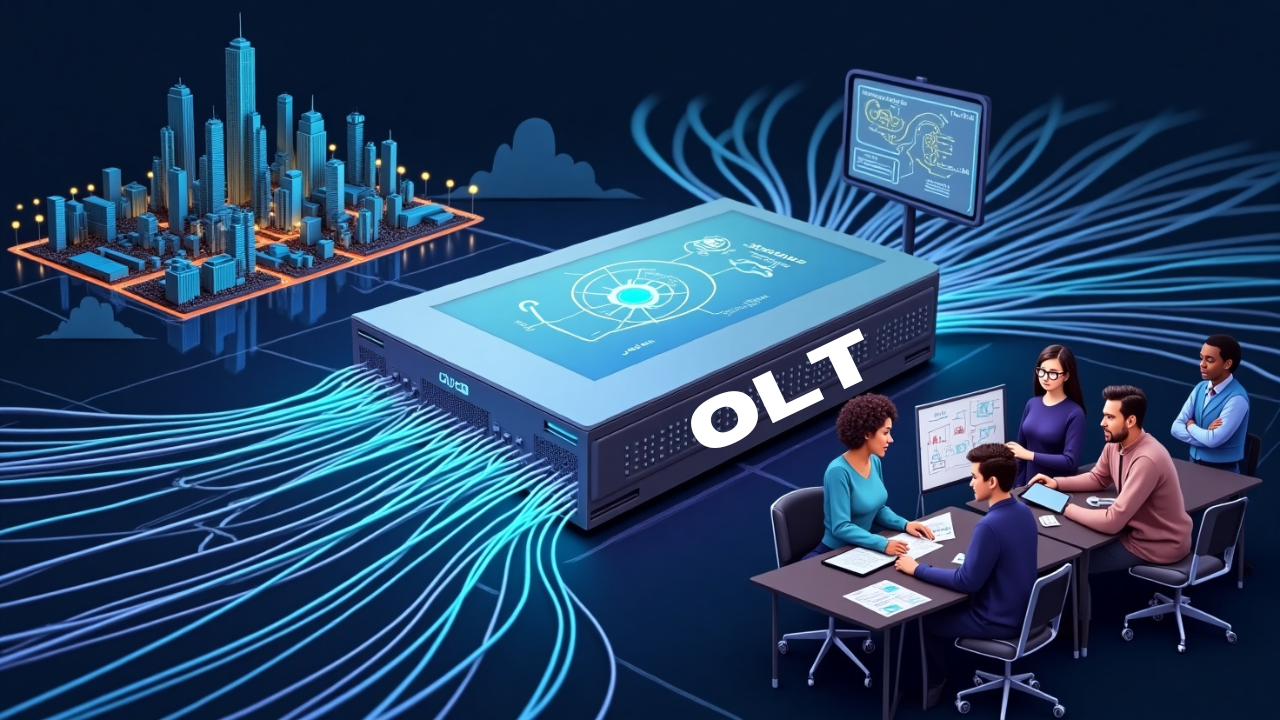Introduction to Optical Line Terminals (OLTs)
In today’s digital age, high-speed internet is a vital necessity, and Optical Line Terminals (OLTs) are integral to delivering this connectivity. These devices, typically situated at the service provider’s central office, act as the essential endpoint of a Passive Optical Network (PON). By converting standard signals from Fiber to the Home (FTTH) service providers into the specific frequency and framing required by the PON system, OLTs ensure the seamless distribution of data, voice, and video services to users. This guide takes a closer look at OLTs, their components, how they function, and their pivotal role in enabling modern broadband networks.
What is an Optical Line Terminal (OLT)?
An Optical Line Terminal (OLT) serves as the central hub within fiber-optic broadband networks, facilitating the transmission and reception of data, voice, and video signals. OLTs are critical for high-speed internet services and power the fiber-to-the-home (FTTH) infrastructure by managing communication between the service provider’s central office and subscribers. Without OLTs, reliable and scalable broadband connectivity would not be possible.
Components of an Optical Line Terminal (OLT)
OLTs consist of several key components, each playing a crucial role in ensuring efficient data transmission:
- Central Processing Unit (CPU):
- The CPU is the brain of the OLT, managing operations such as signal processing, traffic management, and system coordination.
- PON Cards:
- These cards establish connections between multiple Optical Network Units (ONUs) or Optical Network Terminals (ONTs) and a single OLT, enabling efficient communication over long distances.
- Gateway Router (GWR):
- The GWR ensures uninterrupted communication between local and external networks, optimizing data flow across the system.
- Voice Gateway (VGW) Uplink Cards:
- These cards are dedicated to handling voice data transmission, ensuring high-quality VoIP (Voice over IP) services.
How OLTs Function in Broadband Networks
OLTs are central to the proper functioning of fiber-optic broadband networks. Here’s how they work:

Downstream Data Transmission
The OLT sends data to users via a single fiber, typically at a wavelength of around 1490 nm. This data is then split and distributed to multiple ONUs using optical splitters. By utilizing passive optical network (PON) technology, OLTs ensure that the available bandwidth is efficiently allocated across all connected users.
Upstream Data Reception
Conversely, the OLT also receives data from ONUs at a different wavelength, usually around 1310 nm. The OLT processes this incoming data, adjusts transmission timings, and optimizes network resources to maintain smooth communication.
Ranging Process
A critical part of OLT functionality is the ranging process, which measures the distance to each ONU and adjusts transmission timings accordingly to avoid data collisions. This ensures high-quality, uninterrupted service.
Key Functions of Optical Line Terminals (OLTs)
The success of fiber-optic networks depends heavily on the performance of OLTs. Key functions include:
- Signal Conversion:
- OLTs convert electrical signals from service providers into optical signals that can travel through fiber-optic cables, and vice versa.
- Traffic Management:
- OLTs effectively manage network traffic, prioritizing data packets to prevent congestion and ensure optimal bandwidth utilization.
- Network Coordination:
- OLTs synchronize transmission times across all ONUs, ensuring high-quality service and preventing signal interference and data collisions.
Why OLTs Are Vital for Broadband Networks
OLTs are the backbone of modern high-speed broadband networks. Here’s why they are essential:
- Enabling Ultra-Fast Internet Access: OLTs facilitate ultra-fast internet speeds, enabling users to enjoy seamless browsing, streaming, and gaming experiences.
- Supporting Multiple Services: In addition to internet, OLTs support IPTV, Voice over IP (VoIP), and other multimedia services, making them versatile and cost-effective.
- Scalable Network Expansion: As broadband demand increases, OLTs can be easily upgraded and expanded to accommodate more users without compromising service quality.
By optimizing data transmission, resource management, and network coordination, OLTs play a key role in ensuring the smooth functioning of fiber-optic broadband networks.
Conclusion: The Critical Role of OLTs in Broadband Infrastructure
Optical Line Terminals (OLTs) are integral to the delivery of high-speed broadband services. As the central hubs of Fiber-to-the-Home (FTTH) networks, they enable efficient and scalable data transmission, supporting the growing demand for reliable internet services. Understanding how OLTs work and their components helps us appreciate their essential role in modern communications. As technology continues to advance, OLTs will remain a driving force behind faster and more reliable broadband connectivity worldwide.
